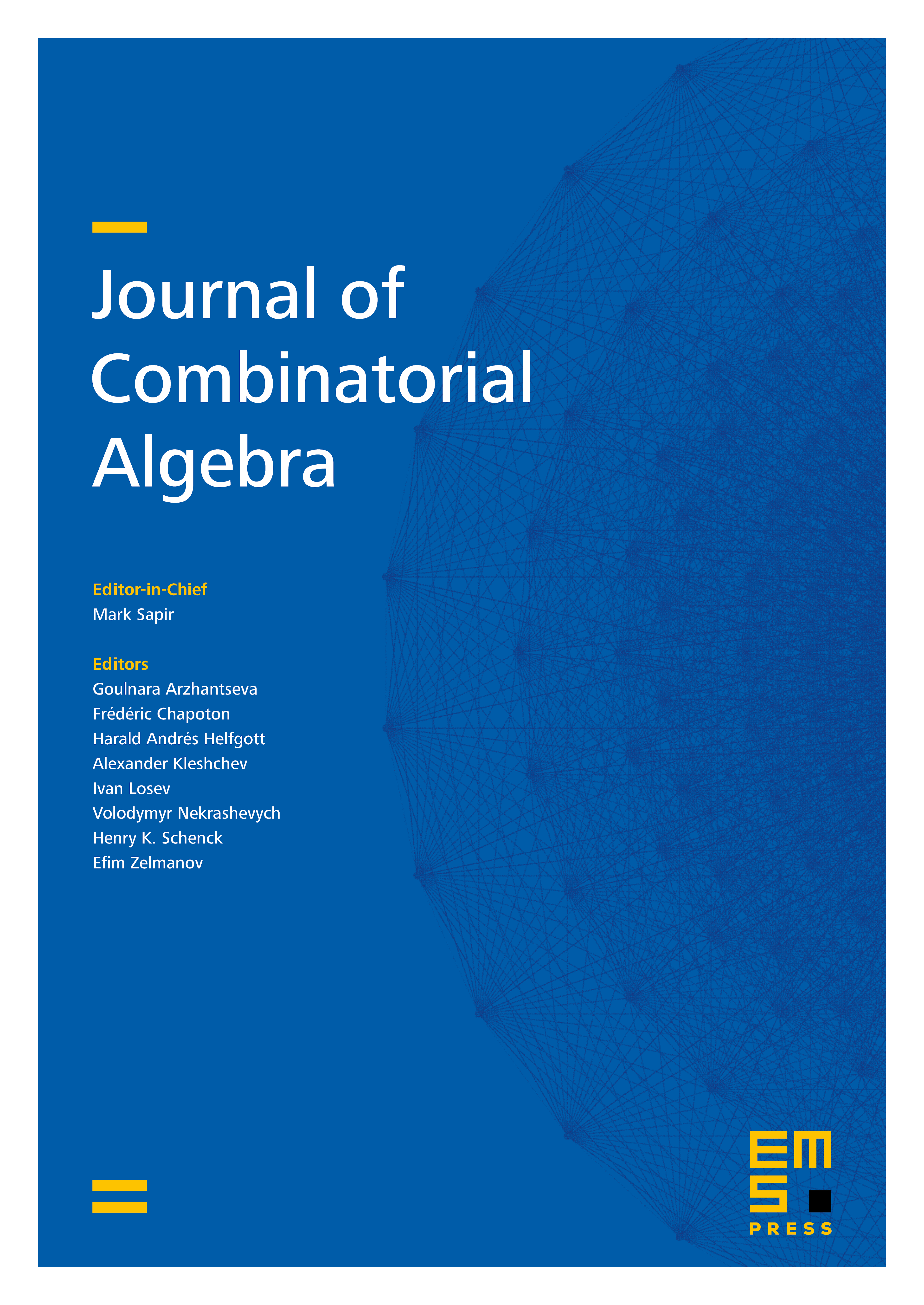Stanley–Reisner rings for symmetric simplicial complexes, -semimatroids and Abelian arrangements
Alessio D’Alì
University of Warwick, Coventry, UK; Max-Planck-Institut für Mathematik in den Naturwissenschaften, Leipzig, Germany; Institut für Mathematik, Universität Osnabrück, GermanyEmanuele Delucchi
University of Pisa, Italy; SUPSI, Lugano-Viganello, Switzerland

Abstract
We extend the notion of face rings of simplicial complexes and simplicial posets to the case of finite-length (possibly infinite) simplicial posets with a group action. The action on the complex induces an action on the face ring, and we prove that the ring of invariants is isomorphic to the face ring of the quotient simplicial poset under a mild condition on the group action.We also identify a class of actions on simplicial complexes that preserve the homotopical Cohen–Macaulay property under quotients.
When the acted-upon poset is the independence complex of a semimatroid, the h-polynomial of the ring of invariants can be read off the Tutte polynomial of the associated group action. Moreover, in this case an additional condition on the action ensures that the quotient poset is Cohen–Macaulay in characteristic 0 and every characteristic that does not divide an explicitly computable number. This implies the same property for the associated Stanley–Reisner rings. In particular, this holds for independence posets and rings associated to toric, elliptic and, more generally, -arrangements.
As a byproduct, we prove that posets of connected components (also known as posets of layers) of such arrangements are Cohen–Macaulay with the same condition on the characteristic.
Cite this article
Alessio D’Alì, Emanuele Delucchi, Stanley–Reisner rings for symmetric simplicial complexes, -semimatroids and Abelian arrangements. J. Comb. Algebra 5 (2021), no. 3, pp. 185–236
DOI 10.4171/JCA/53